Getting back from a lovely European vacation, my husband and I had an opportunity to tour 12th century castles in Germany. It is always fascinating to learn about their daily life. It was especially hard for those toiling away in the kitchen. Just think about this for a minute – there were no microwaves, dishwashers, self-cleaning ovens, or any of the other modern conveniences we take for granted. Back in the 12th century, they knew how to build kitchens. In a medieval castle, kitchens were an important feature as the Lord of the manor would often throw grand banquets and lavish feasts.
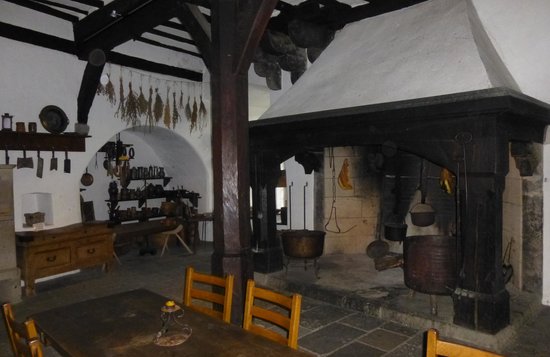
In many medieval castles, the kitchen location is below the Great Hall as in the photo above. After preparation, the banquet would be taken upstairs to the guests. Some castles had kitchens housed in separate buildings to reduce the risk of fire to the primary residence. Still other medieval castle kitchens were located in the great hall.
A benefit of having the kitchen in the main castle was that it also served to heat the building. Many castles that had kitchens in the primary structure also had separate stone staircases used by the servants to deliver the food.
The long table in this kitchen could be used by the family or servants for their meals. You can see the orderly arrangement of the kitchen.
Of course, there were no modern conveniences like the stoves and refrigerators that we have today. The kitchen storeroom was often located in the coolest part of the castle.
Another dining area shown in the photo below features a banquette, which is still popular today. Many modern kitchens feature a seating area either in, or off to the side often in an alcove. This table was also located in a different portion of the above-pictured working kitchen. It would not be an easy task for someone at the far end of the table to excuse him or herself to visit the restroom – which actually consisted of nothing more than a hole in the ground with dirt below.

The photo below shows the great room, located one floor above the working kitchen. Entertaining of guests took place in this room. The door situated behind the table led to the bathroom, a fairly small closet-type room with a hole in the flooring. At night, they would dead-bolt the door shut to prevent raids on the castle from enemies entering through the hole.
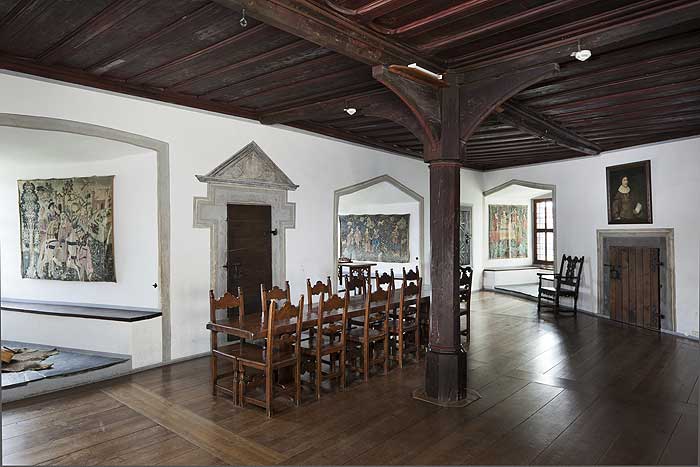
Features of the Medieval Castle Kitchens
In many medieval castle kitchens, alcoves housed the cooking area. Here you would find a variety of different shaped pots – some metal and others clay. Food was cooked over a central heating area – an open fire. The would stew the meat in a cauldron or, like in this castle, roasted on coals – no open fires. Temperature control consisted of raising or lowering the height of the food.
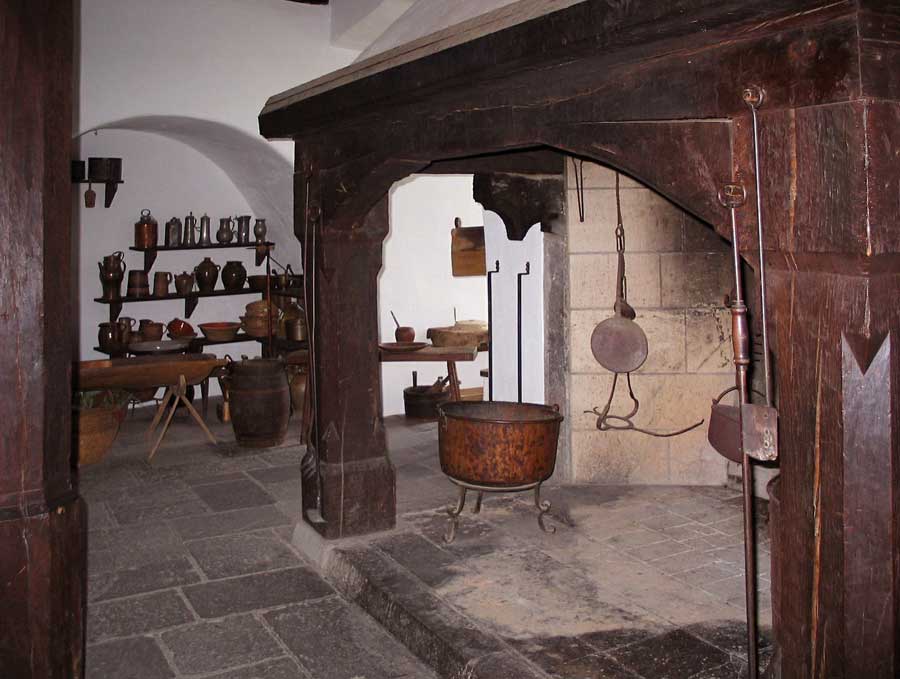
The photos below show the orderly storage of pots and cooking utensils on shelves on the walls. As you can also see, various forms of protein hung from hooks awaiting their preparation. You can also see the multiple urns used to churn butter and cheese. Medieval castle kitchens were kept very neat and orderly.
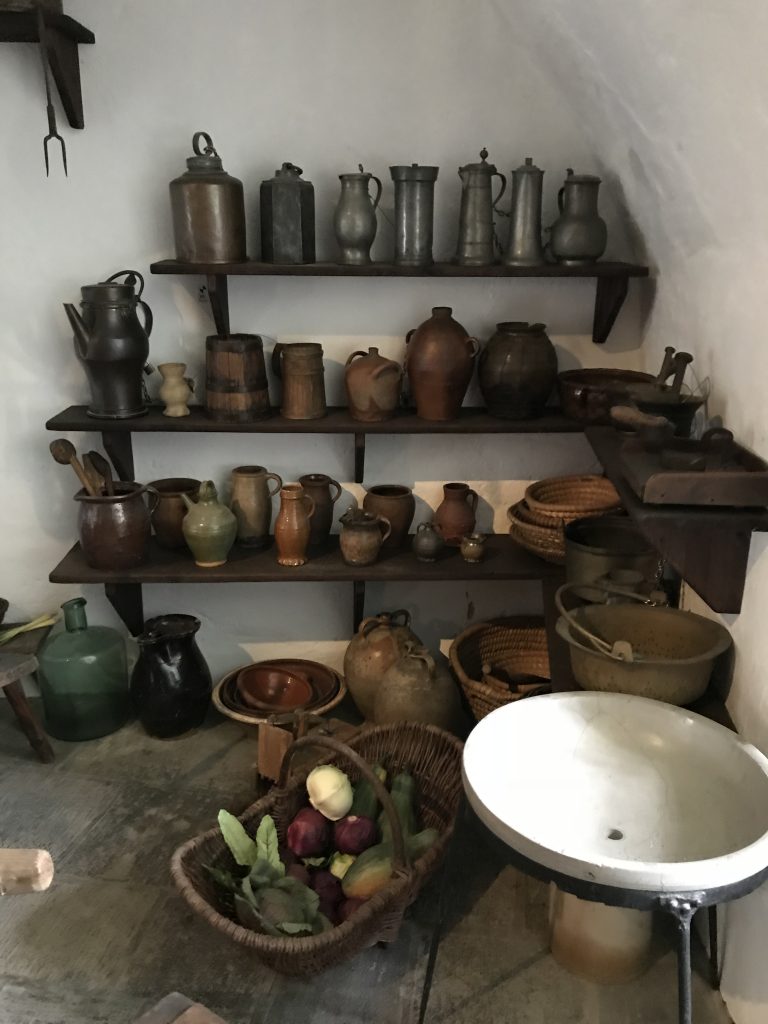
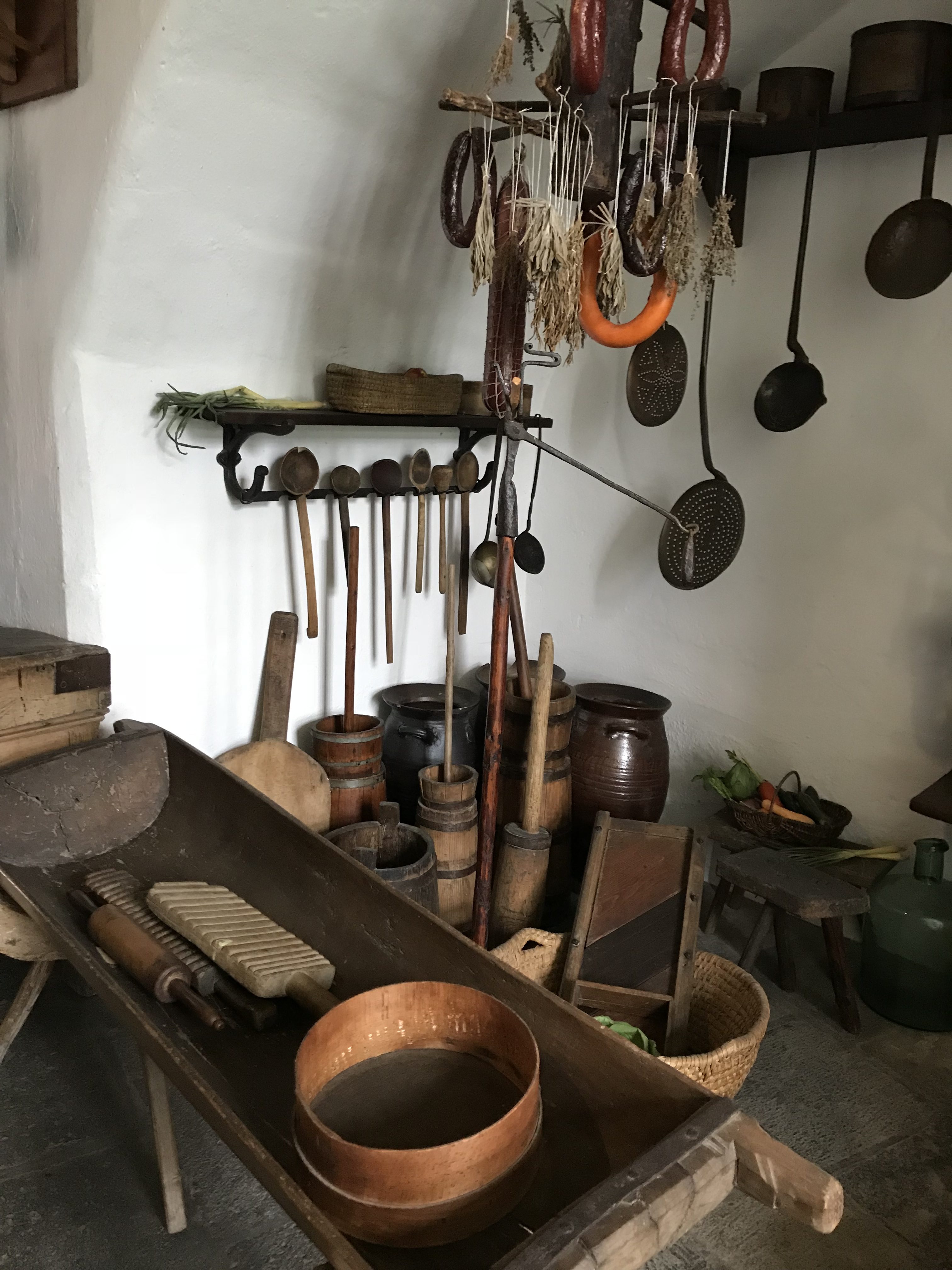
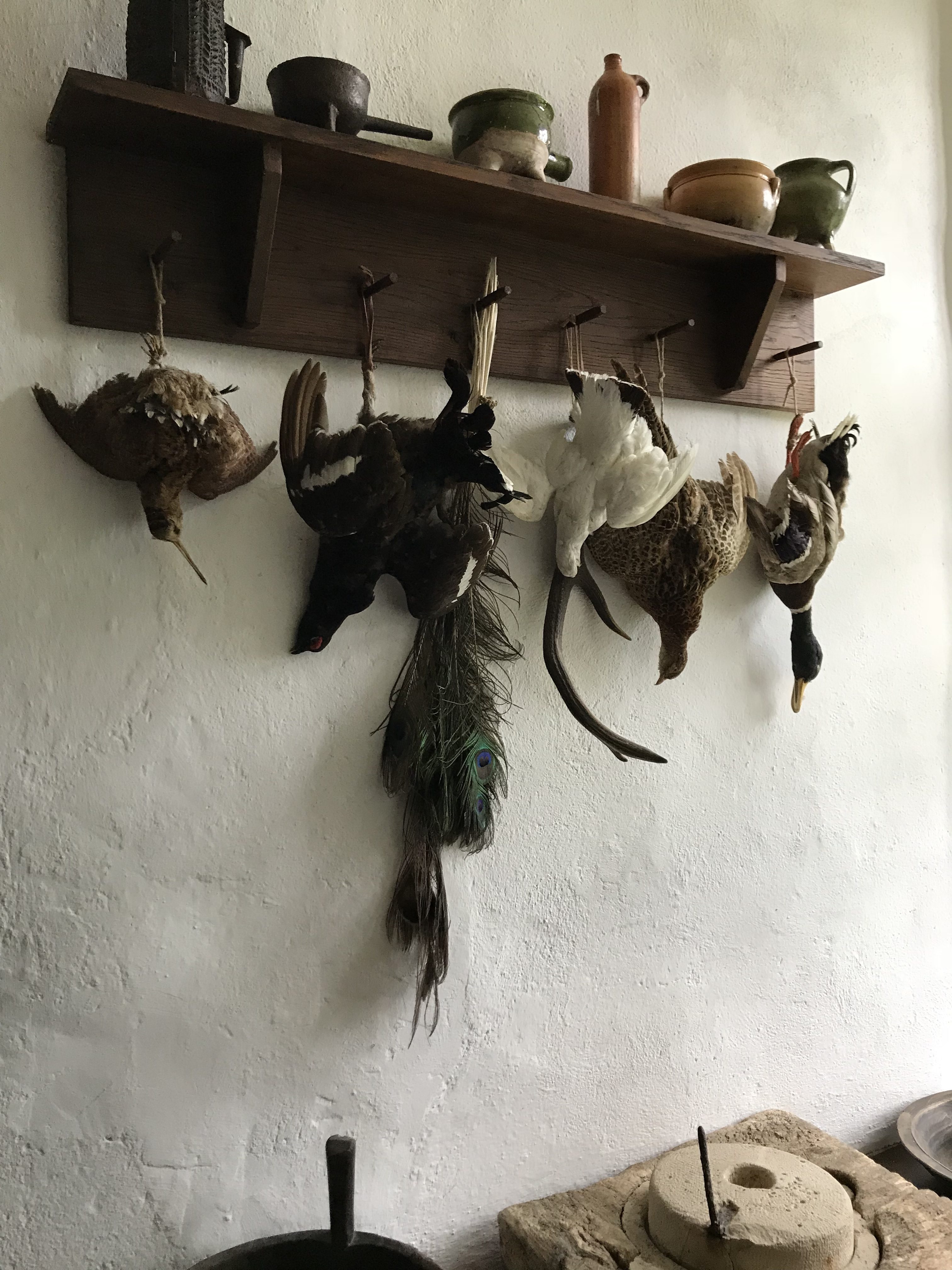
Today, many people still hang pots from hooks over their counters or kitchen islands.
Medieval Waiters and Handling Guests Who Sent Food Back to the Kitchen
In case you were wondering how the medieval castle kitchen staff handled guests who sent their food back, we have the answer.
First, someone dressed in one of these outfits would come to your table and inquire as to your problem.
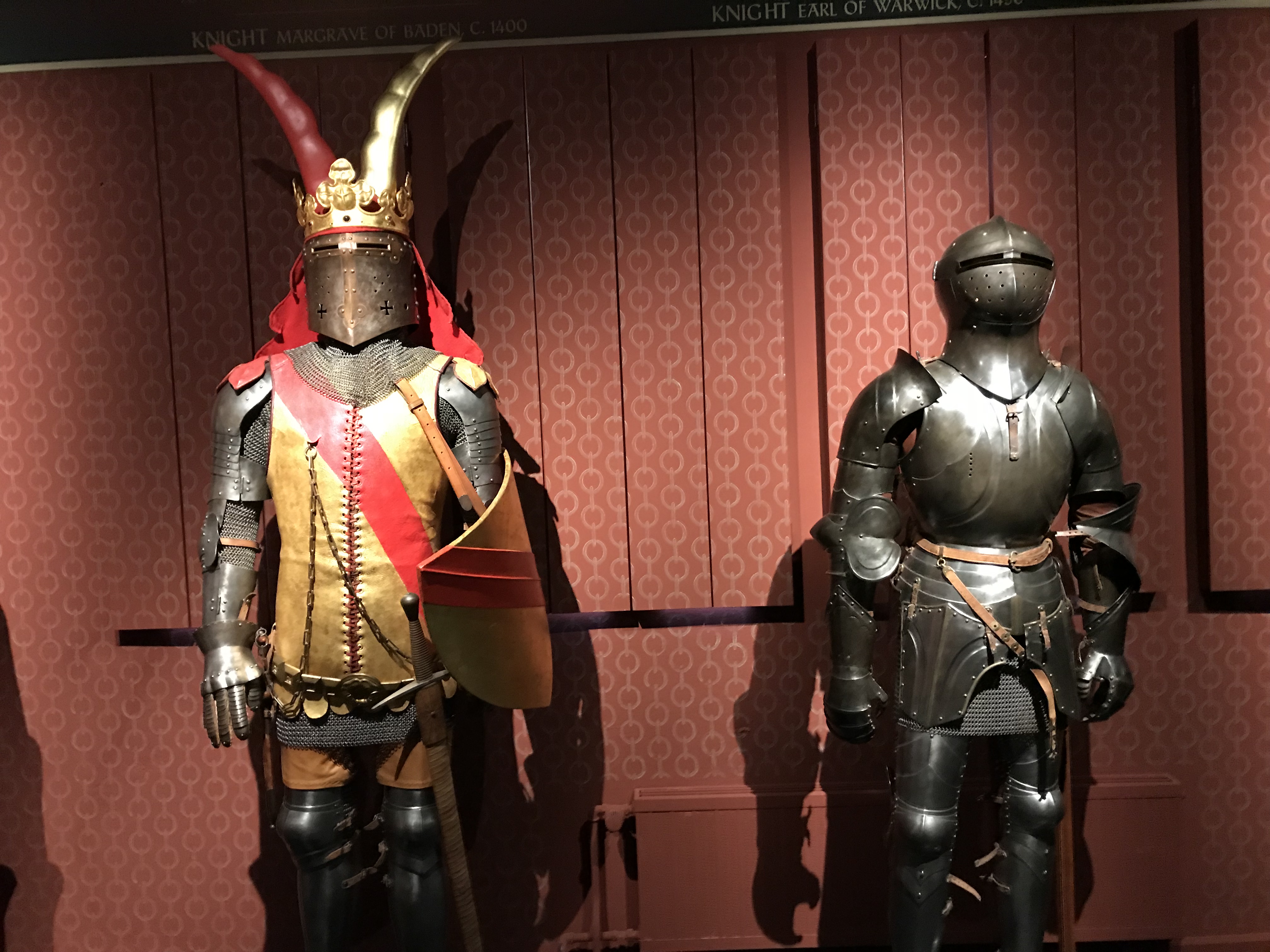
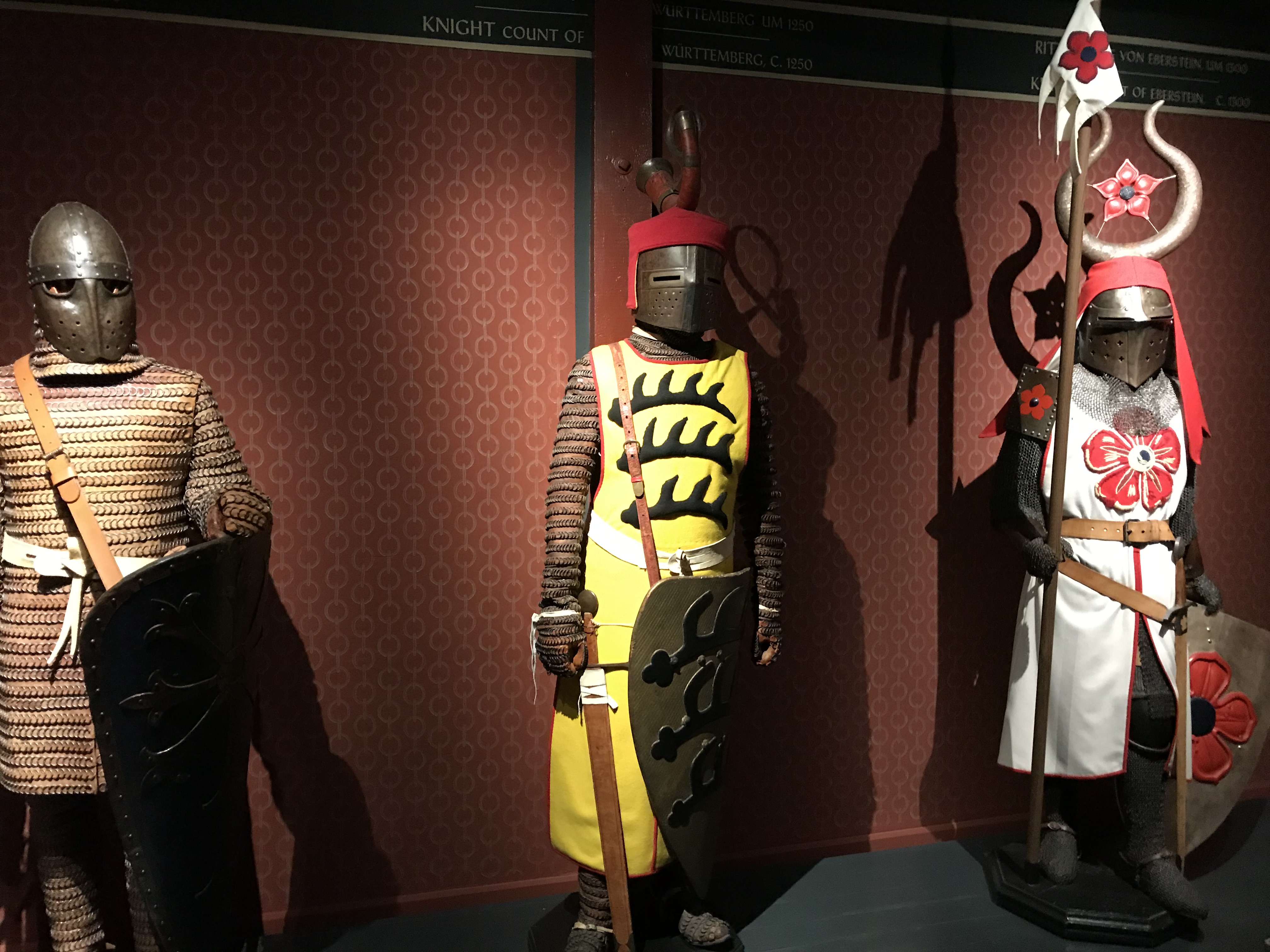
Next, a member of the staff would remove your plate and return it to the kitchen with your complaint.
If you were one of the lucky ones, someone would return to your table brandishing one of these “serving pieces.” You would likely be escorted from your seat to either the front door or the dungeon.
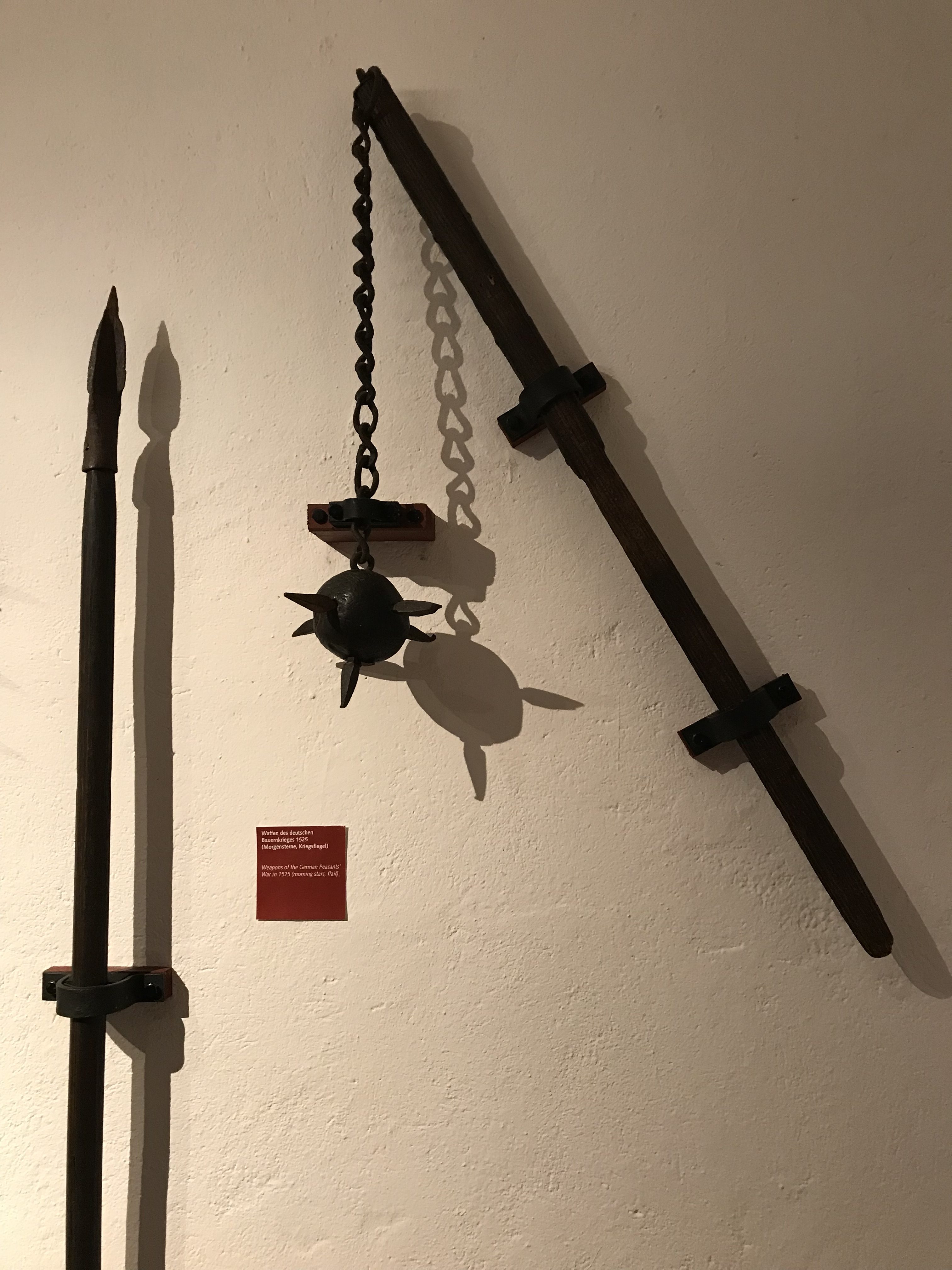
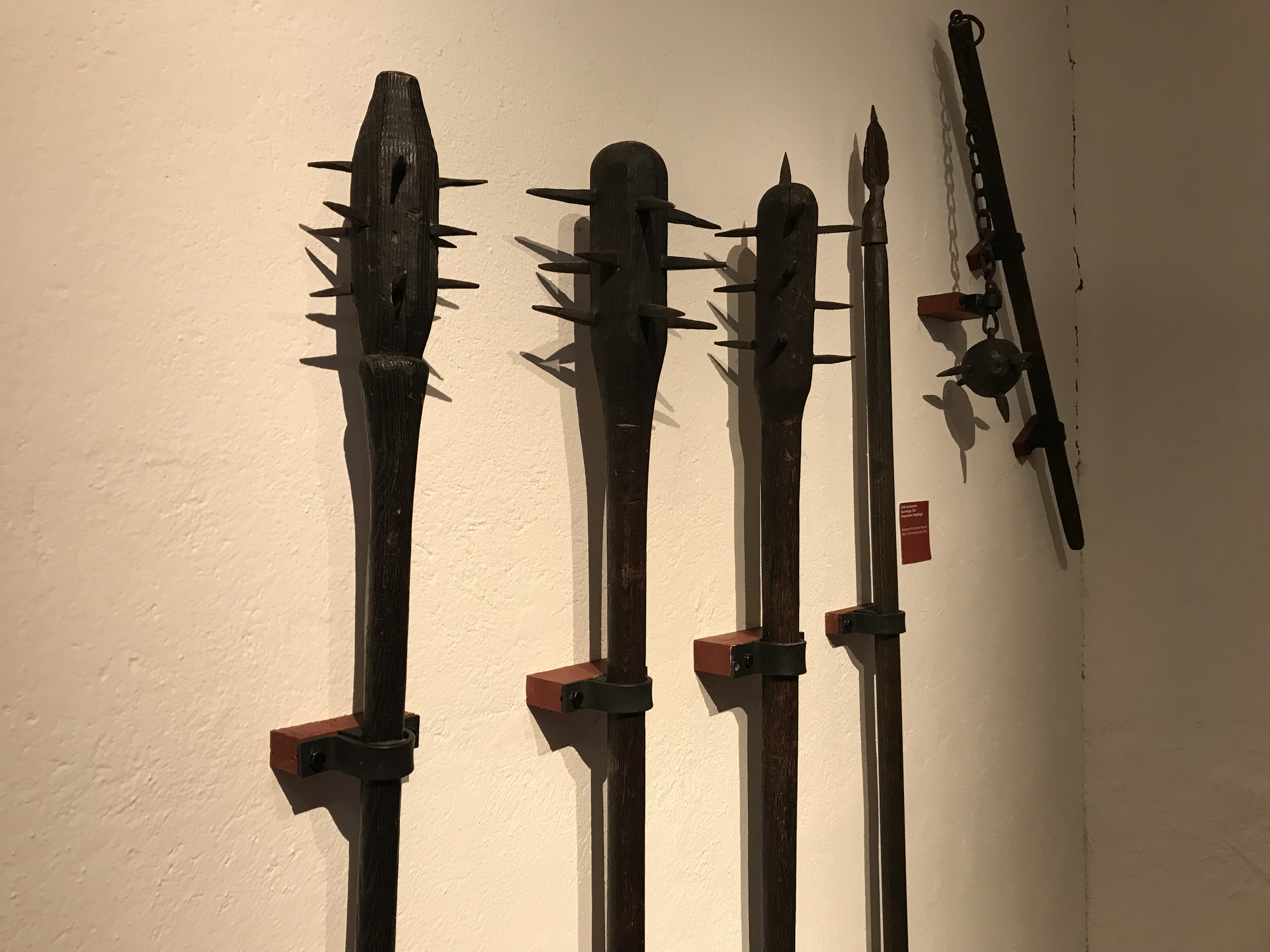
Of course, if you were escorted to the door, do not turn around after you exit the castle. Just in case you ever wondered what the canons were for, now you know.
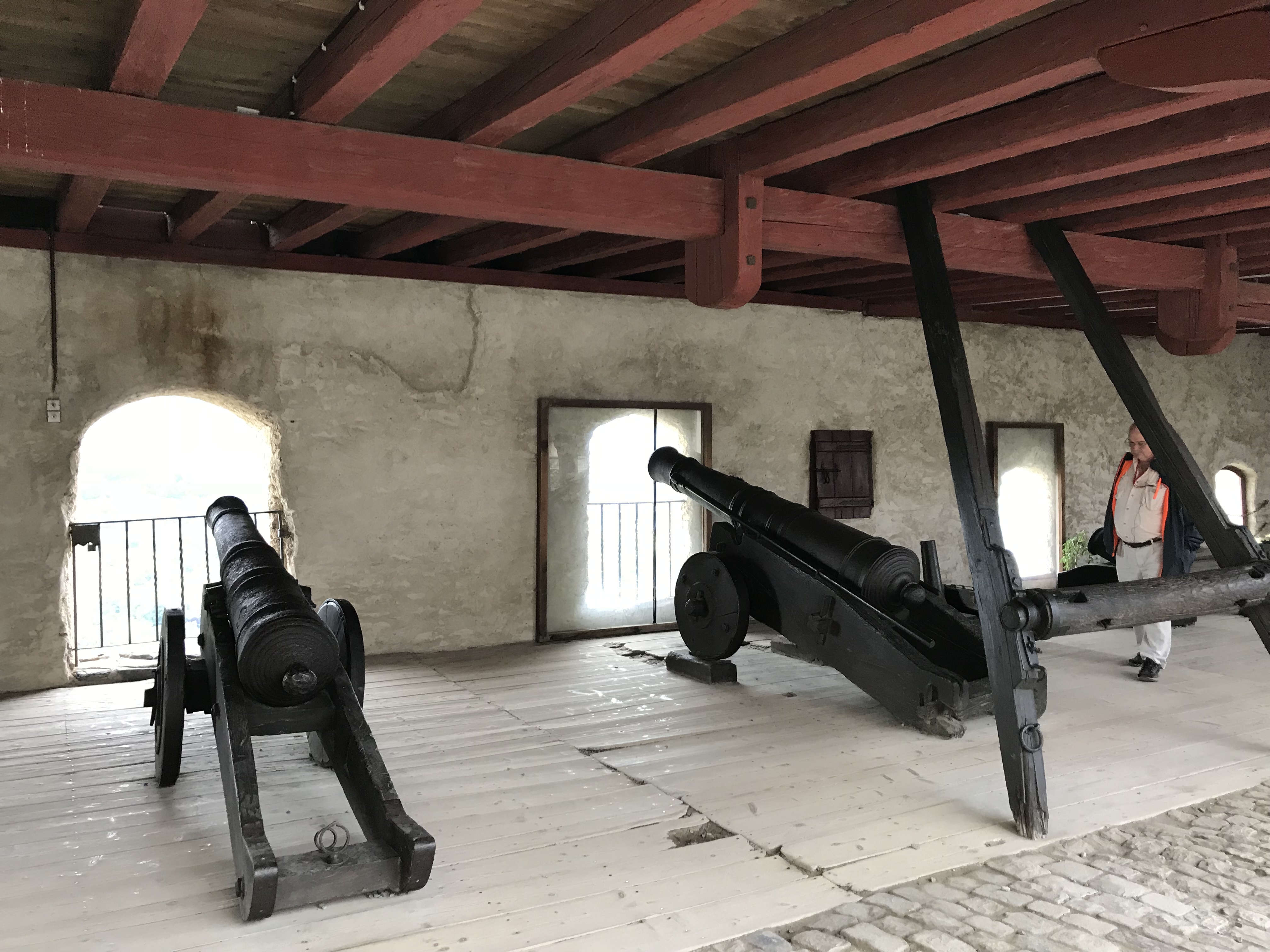
Yes, this has all been tongue-in-cheek and good fun. It is doubtful that anyone ever complained about their food – other than the Lord of the castle.
We hope you have enjoyed this look back to 12th-century medieval castle kitchens. If you are ready to update your kitchen, please contact HK Interiors for some “modernizing” ideas. Call us at 954-401-8542 today for all your interior design needs.
